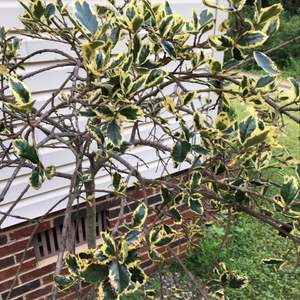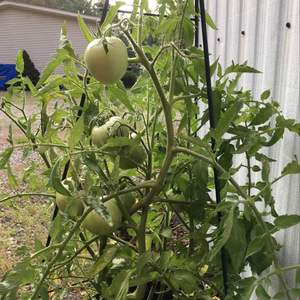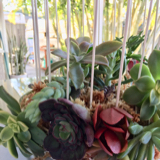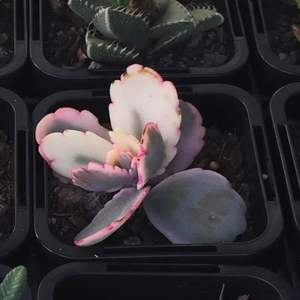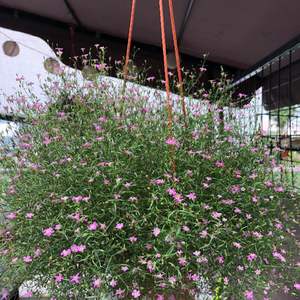文章
Miss Chen
2018年07月29日

If you enjoy growing tropical plants with colorful flowers, the plumeria plant (Plumeris spp.) could be an excellent choice for your garden or as a small indoor tree. Also called the frangipani or temple tree, the plant grows outdoors year-round in U.S. Department of Agriculture plant hardiness zones 9 through 11. You can help keep a plumeria tree in good shape and promote plenty of flowers by pruning it regularly.

The Best Method
A plumeria tree is naturally short and stocky, developing a broad crown and reaching 12 feet or more when it's 6 years old, although this can vary with the variety. Some species, such as West Indian Jasmine (Plumeria alba), which grows in USDA zones 10 through 12, can grow 40 feet tall a if left unpruned. When cutting back a plumeria, use a sharp knife or pruning shears. For a tall plumeria, you might need a pruning saw mounted on a tall pole. Always make cuts at an angle so water won't collect in the cut end of the branch and encourage fungal disease. It's also important to prevent spread of diseases by disinfecting your pruning blades after each cut, wiping them well with rubbing alcohol or dipping them in a container of rubbing alcohol.
Timing
You can prune a plumeria tree at any time, but pruning an actively growing tree can leave unsightly branch stubs until new growth starts. The plant slows its growth in winter, dropping its leaves and looking bare until new ones appear in spring. During this dormant season, it's easy to see the tree's basic form, making pruning decisions easier. To allow the tree to set blossoms for the following season, prune lightly so that enough young growth remains to produce new flowers in spring. To keep the tree within bounds, you can repeat light winter pruning every year or two until the tree reaches a suitable size for its location.
The Overall Plan
If your plumeria is just few years old, you can help control its size in future years by heading it back every year or two, cutting healthy branches back by about one-third. This also encourages lots of new branches that help fill in the tree's shape as it grows and eventually produce flower buds. An older tree that's outgrown its space may respond well to a method called pollarding, which involves removing the upper branches from a mature tree to promote a dense canopy of foliage. This method reduces the tree's size and can keep a mature tree at a predetermined height. Regardless of the tree's age, how often you prune depends somewhat on the tree's response. If there's abundant new growth the following year, you can prune yearly, but if growth appears slowly, it's a good idea to skip a year or two between prunings.

After Pruning
You can help stimulate a newly pruned plumeria to put out healthy growth by fertilizing it regularly during its growing season. Use a granular, 10-30-10 formula, applied at the rate of 1 pound per 1 inch of trunk diameter. Spread the fertilizer under the tree evenly, scratching it into the soil and distributing it to about 2 feet beyond its drip line, which is the outermost area where foliage extends over the ground. Providing adequate water also supports new growth, especially during summer dry spells -- supply enough water to keep the soil moist but not soggy, generally about 1/2 to 1 inch weekly.

The Best Method
A plumeria tree is naturally short and stocky, developing a broad crown and reaching 12 feet or more when it's 6 years old, although this can vary with the variety. Some species, such as West Indian Jasmine (Plumeria alba), which grows in USDA zones 10 through 12, can grow 40 feet tall a if left unpruned. When cutting back a plumeria, use a sharp knife or pruning shears. For a tall plumeria, you might need a pruning saw mounted on a tall pole. Always make cuts at an angle so water won't collect in the cut end of the branch and encourage fungal disease. It's also important to prevent spread of diseases by disinfecting your pruning blades after each cut, wiping them well with rubbing alcohol or dipping them in a container of rubbing alcohol.
Timing
You can prune a plumeria tree at any time, but pruning an actively growing tree can leave unsightly branch stubs until new growth starts. The plant slows its growth in winter, dropping its leaves and looking bare until new ones appear in spring. During this dormant season, it's easy to see the tree's basic form, making pruning decisions easier. To allow the tree to set blossoms for the following season, prune lightly so that enough young growth remains to produce new flowers in spring. To keep the tree within bounds, you can repeat light winter pruning every year or two until the tree reaches a suitable size for its location.
The Overall Plan
If your plumeria is just few years old, you can help control its size in future years by heading it back every year or two, cutting healthy branches back by about one-third. This also encourages lots of new branches that help fill in the tree's shape as it grows and eventually produce flower buds. An older tree that's outgrown its space may respond well to a method called pollarding, which involves removing the upper branches from a mature tree to promote a dense canopy of foliage. This method reduces the tree's size and can keep a mature tree at a predetermined height. Regardless of the tree's age, how often you prune depends somewhat on the tree's response. If there's abundant new growth the following year, you can prune yearly, but if growth appears slowly, it's a good idea to skip a year or two between prunings.

After Pruning
You can help stimulate a newly pruned plumeria to put out healthy growth by fertilizing it regularly during its growing season. Use a granular, 10-30-10 formula, applied at the rate of 1 pound per 1 inch of trunk diameter. Spread the fertilizer under the tree evenly, scratching it into the soil and distributing it to about 2 feet beyond its drip line, which is the outermost area where foliage extends over the ground. Providing adequate water also supports new growth, especially during summer dry spells -- supply enough water to keep the soil moist but not soggy, generally about 1/2 to 1 inch weekly.
0
0
成长记
Natalie Coudré
2018年07月29日

I now added "Narrow leaf ficus - Ficus Binnendijkii" in my "garden"


0
0
成长记
Natalie Coudré
2018年07月29日

I now added "Castanospermum australe house plant. Jack's beanstalk tree. Moreton Bay Chestnut." in my "garden"


0
0
成长记
Natalie Coudré
2018年07月29日

I now added "Beaucarnea recurvata - Ponytail Palm" in my "garden"


0
0



